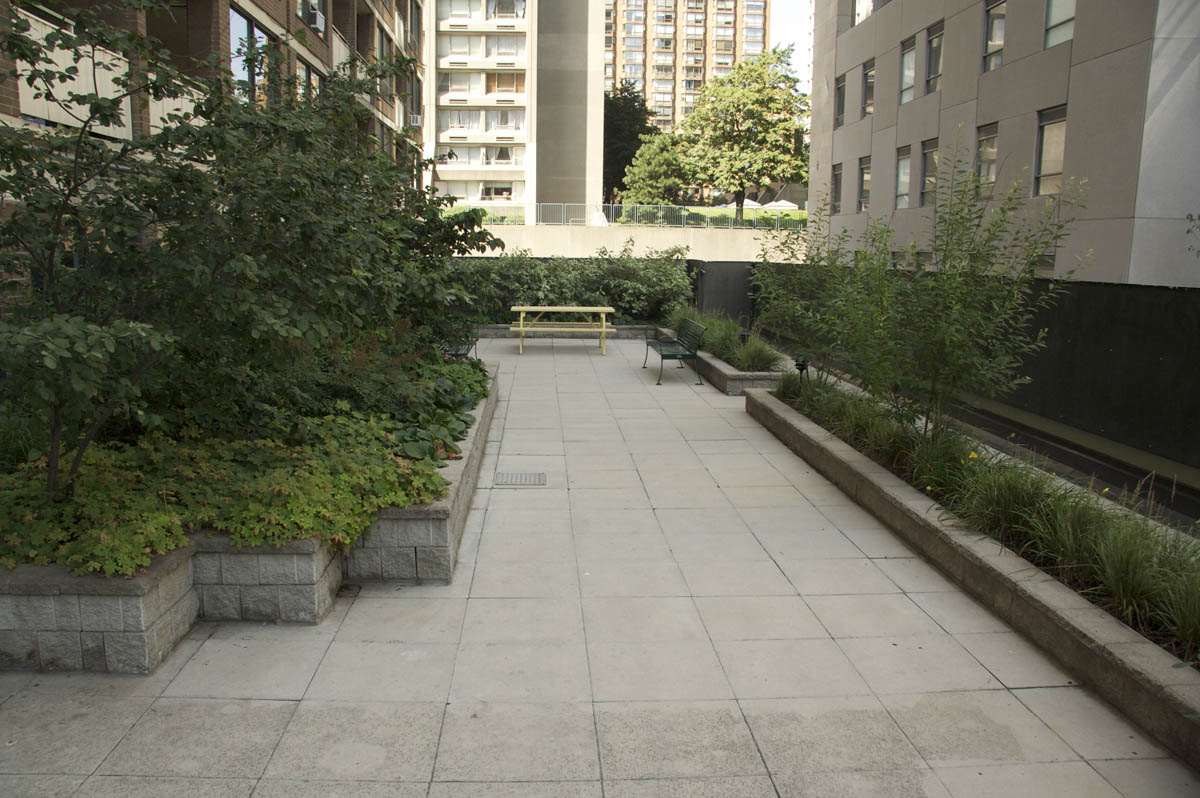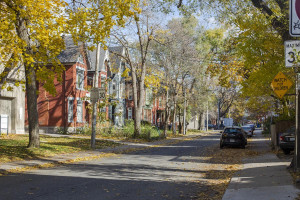
Charles Street
The Ellen Giles Rooftop Garden
History
When constructed in 2003-04, it was the largest such initiative undertaken at the University of Toronto to date. The project transformed 10,000 square feet of unused cement-covered terrace at 30 Charles St. West into a beautiful roof garden that makes a significant contribution to the environment.
This garden was the dream of Ellen Giles, the first Community Development Coordinator, and for many years the Manager of Student Family Housing Admissions. Without her, this project would never have come to be. In 2007, the University of Toronto named the garden after Ellen to honour her major contribution to the lives of all student families that live here. When you visit, keep an eye for the plaque on the wall to get an idea of the history of the garden and your community.

Hours
The garden is open daily from 9:00 am to 9:00 pm from approximately May 1 – October 31.
Every year Community & Recreation celebrates the garden’s Spring re-opening with the Annual Resident Garden Party.
Location
Residents of both 30 and 35 Charles are welcome to use the garden during opening hours. The garden is located on the 3rd floor of 30 Charles, adjacent to the Drop-In Centre. The garden has many picnic tables and benches for you or your group. The garden also has a very large sandbox play area for children. Community & Recreation offers various children’s toys at the garden during Drop-In Centre hours and during seasonal afternoon and evening garden programs.
The Rooftop Garden is not available to rent for parties, and unfortunately cannot be used for barbeques because of fire code by laws. Additionally, no alcohol consumption or smoking of any kind is permitted.
Green Roofs
Environmental Benefits
The benefits of Green Roofs are becoming more accepted and promoted with every passing year. Over one million square metres of green roofs are created in North America every year and the practice is even more popular in Europe. Germany leads the way with 11 million square metres of green roofs built every year and in some parts of Berlin as much as 30% of roofs have been greened (WorldGreenRoof.org).
Green roofs address two major environmental issues
Rising city air temperatures are known as the Urban Heat Island Effect, and then there is the problem of stormwater runoff. Plant covered roofs significantly improve air quality and lower temperatures — reducing energy consumption, smog formation and respiratory health problems in the process. As a result, green roofs are being implemented in cities such as Chicago as a pilot project to lower city temperatures and save the city millions of dollars in the process. Green roofs also reduce stormwater runoff. Rain is absorbed and used by the soil and plants, instead of turning from a resource to a pollutant as runoff. With as little as six inches of soil, up to 80% of summer precipitation is diverted from the sewage system, improving water quality. Student Family housing was ahead of the curve as Toronto passed a bylaw in 2010 encouraging green roof production for both its environmental and economic benefits.
Description of Project
This local green roof has the dual purpose of improving the environment while it provides safe and accessible green space for the roughly 2000 residents of Student Family Housing. Approximately half of the 10,000 square foot roof is planted with shade-loving native wildflowers, flowering perennials, shrubs, and trees. The remaining area provides seating and circulation areas. The design strategy creates outdoor rooms in a big backyard. The variety of “rooms” are suitable for both individual study and group interaction.
Other Benefits
Beyond the environmental and economic value of green roofs, the aesthetic improvement and psychological benefit to human health provided by interaction with green space is becoming increasingly documented. Studies have shown that even the passive interaction of a view of plants in health care settings can reduce pain medication and length of hospital stays (Cooper-Marcus and Barnes 1999). The added space also provides areas for recreation and community development while helping protect the city biodiversity. The green roof garden provides a positive space for residents and helps university students successfully complete their degrees.
Funding
Initiated by the Tenants’ Association in conjunction with the Community Development Coordinator of Student Family Housing, the project is funded by Ancillary Services, University of Toronto, with generous support from Environment Canada’s EcoAction Community Program, The City’s Toronto Atmospheric Fund, and TD Friends of the Environment Foundation.


